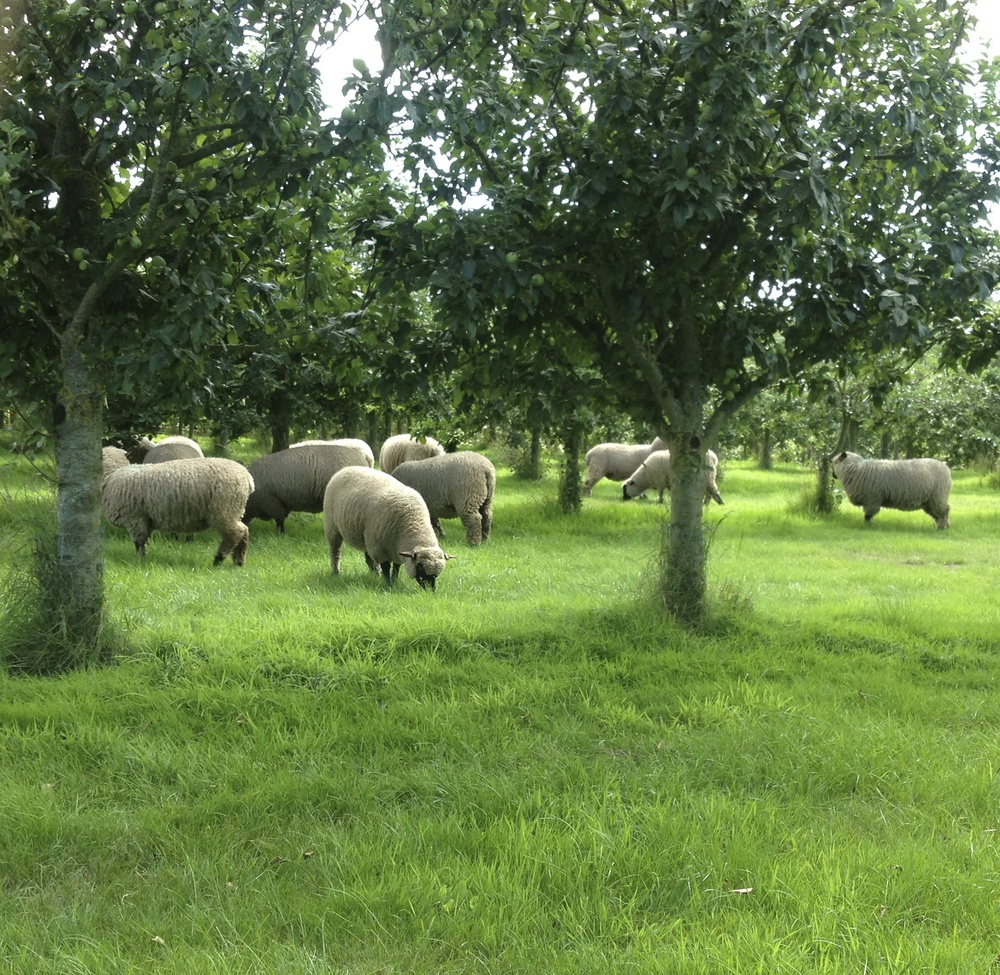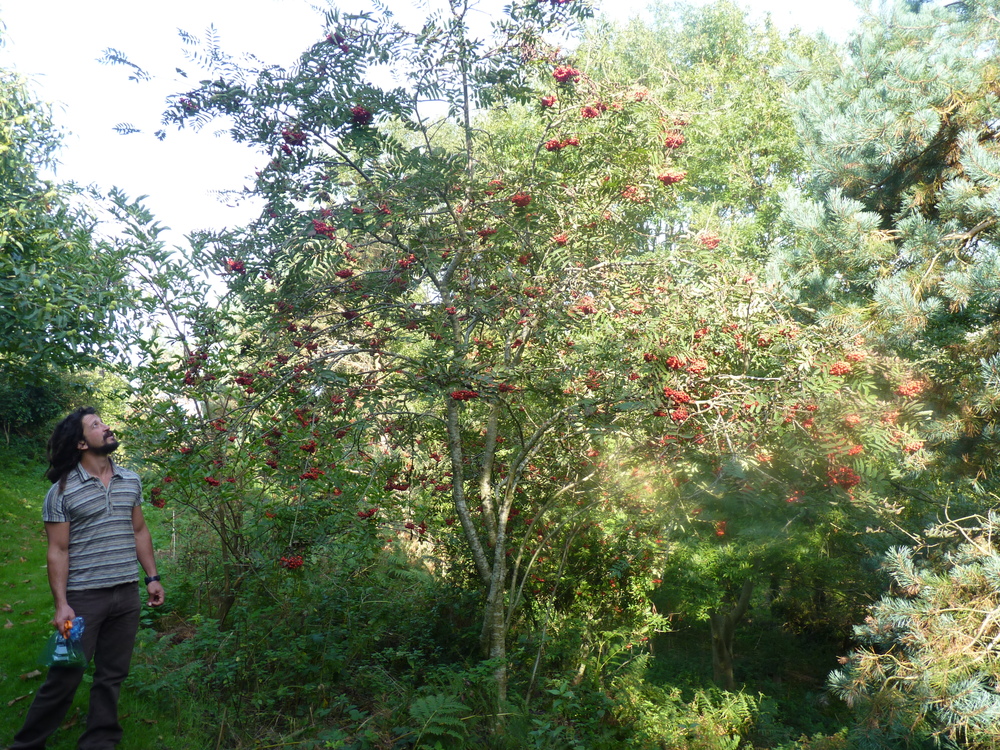


 (This article appears in the November issue of RURAL magazine in an abbreviated form because of coinstraints on space. The full version follows below)
(This article appears in the November issue of RURAL magazine in an abbreviated form because of coinstraints on space. The full version follows below)
New apple orchards are being planted in the UK and in Jersey. Hans van Oordt explores the recent growth of the UK cider market and the rise of craft cider making.
Rising Cider Sales
Cider sales in the UK have risen by 32% over the last five years reaching £2.7 billion in 2012, according to market research firm Mintel. Over the next five years, the sector is forecast to add another £1 billion in sales. In an otherwise sluggish market for alcoholic beverages, this is a stellar performance. So when did 3 out of 5 adults in the UK become regular consumers of cider?
The Magners Effect
The answer lies partly in marketing. In 2005, the Irish cider-maker, Magners, launched a massive TV and editorial campaign to promote Magners cider in the UK. Weary of spirit-based ‘alcopops’, the UK mass-market eagerly switched allegiance to this newcomer. There was nothing new about cider of-course. What was new was the glamorous styling of the product at the hands of the Magners marketing team. Cider had always been around, but it had developed something of an image problem. It was seen as a somewhat eccentric drink consumed either by rosy-cheeked farmers, or adolescents on park benches. The Magners campaign changed all of that.
The no-expense-spared adverts taught us how to drink cider poured over ice. They also showed both men and women enjoying cider in tall, slim glasses. Gone were the heavy, thick-handled pint glasses. This cider was not only served cold, but it now even came in stylish glassware! The Magners campaign promised a smart and shiny world where cider was cool and contemporary.
To the surprise of many people, the Magners campaign was a huge success. I for one was sceptic. As a student in the late 1980’s, the cider culture I knew was anything but cool and contemporary. I lived 400m away from Bristol’s famous Coronation Tap, affectionately known as the Cori Tap. At the time, this was a hardened, 200 year-old cider pub where old men sipped pints of dry, still cider, under fluorescent strip lighting. Once in a while, they would peer over their ‘Racing Post’ and cast disapproving looks as groups of increasingly raucous, and unsteady, students spilt their Exhibition cider onto the lino floor. At 8.5%, it didn’t take much Exhibition cider to end up completely “Corried”. (For the record, the Cori Tap has since been spruced up and is now a far more genial venue. Gone are the fluorescent lights and the lino flooring, replaced by lots of wood, varnish and comfy seats).
More Craft Cider Makers
If Magners are responsible for giving cider an image makeover, it is the smaller, local producers who have done much of the hard work to improve the quality of the product itself. The last 10 years has seen an explosion in the number of small, craft cider producers. Cider festivals are now major events across the UK. At the recent 2013 Brogdale Cider Festival in Kent, there were 70 craft ciders and perries on offer, double the number from five years ago.
More recently, there are signs that the market is moving-on from cider over ice. Increasingly, it’s all about quality, provenance and authenticity. The cider market as a whole is growing, but now it is the craft cider makers that are gaining momentum.
And the corporate sector has also noticed the growth of the craft cider sector. Fullers, the West London brewery, earlier this year purchased craft cider maker ‘Cornish Orchards’ for £3.8m. By definition, craft cider making is difficult to scale up, so it will be interesting to see how the new owners expand ‘Cornish Orchards’ without losing the premium, craft cider appeal.
Slow Food Movement
Some of the explanation for the growth of the craft cider market must lie in the rise of the Slow Food movement with its emphasis on quality, local ingredients and terroir. Slow Food has encouraged us to question where our food comes from and how it is produced. Today, the Slow Food influence can be felt throughout the UK food & beverage industry. Pubs, restaurants, markets and even supermarkets promote menus and products made from fresh, local ingredients.
Another phenomenon which has inspired craft cider makers is the micro-brewery revolution. Small producers creating high quality, real ales and beers are now a prominent feature of the brewing landscape across the UK. Artisan cider makers are hoping to achieve similar success.
Mass-Market Cider
At this point, it is worth highlighting the basic difference in production techniques between mass-market cider and craft cider. Mass-market ciders like Strongbow, Magners, Woodpecker etc are made from apple juice concentrate. This is juice from pressed apples that is evaporated to make a thick, brown syrup. Apple concentrate can be re-hydrated and fermented as required, enabling year round production of a consistent product. This is a highly controlled, industrialised process. Most of the cider consumed in the UK is made this way. The more reputable cider makers use apple juice concentrate made from British cider apple varieties grown under contract around Herefordshire and the West Country, traditional cider apple growing regions.
Of course, there are other industrial cider producers who import apple concentrate from further afield. China is the largest producer of apple concentrate in the world. Chinese apple concentrate is made from dessert apples and not the tannin rich cider varieties that give good cider its depth of flavour. The re-hydrated apple concentrate often ferments to produce a thin and insipid cider which then has to be ‘improved’ by the addition of flavourings, colouring and acidity.
To the purist, anything made from less than 100% freshly pressed apples results in a drink more akin to an ‘alcopop’ than cider. In some instances, it can be difficult to know what exactly you are drinking. Unfortunately, labelling regulations are surprisingly lax when it comes to spelling out whether a cider contains apple concentrate or not. So, buyer beware. If you are looking for something made from freshly pressed apple juice that has been fermented in the autumn, stick to the craft ciders.
The Essence of Craft Cider
In the same way that you would not choose to make wine from supermarket grapes, the best ciders are not made with Golden Delicious apples. Craft cider makers pride themselves in making cider from 100% freshly pressed apple juice without the use of apple juice concentrate. The apples tend to be sourced locally and are predominantly of the tannin-rich, cider variety. Cider apples come in four categories; sweet, sharp, bittersweet and bittersharp. The sweets and the sharps are usually dual-purpose and can be eaten, but the astringent bittersweets and bittersharps are for cider only.
Jersey has a good variety of all four types of apple. Today, there are approximately 50 varieties with intriguing names such as Gros Romeril, Nier Binet, Gras Binet, Douces Dames, Museau d’Boeuf and Gros Pigeonnet. The majority of the Jersey varieties are bittersweets, but there is also a good selection of sweets and sharps for eating.
The best ciders are usually a blend of different cider apples. The bittersweets provide sugar to fuel the fermentation, but it is the bitter tannin that they are prized for. It is the tannin that helps cider develop depth of flavour. Of course, this same tannin makes the apples astringent and unpalatable to eat. The sharps are also important to the cidermaker. They balance the sweetness, but perhaps most importantly, the acidity of the sharp apples helps prevent the juice form spoiling in the time it may take for fermentation to get underway.
The future looks rosy…
Renewed interest in cider making has seen our local landscape enriched as more orchards are planted. Wildlife flourishes in the vicinity of orchards. Significantly, a proportion of these new orchards are of the old heritage varieties. Many of these came very close to extinction in the late 1980’s, were it not for the efforts of Brian Phillips and Rosemary Bett, who were both instrumental in establishing the Jersey Cider Orchard Trust. The Trust went on to plant several orchards including the major ‘gene-bank’ orchard at The Elms, headquarters of the National Trust for Jersey. By planting new orchards of these old apple varieties, we are protecting a small but important aspect of Jersey heritage. What is more, the DNA of one of these old varieties may one day hold the key to major developments in apple breeding or resistance to disease – who knows?
In Jersey, cider production is growing steadily. Richard and Sarah Matlock have established the highly successful ‘La Robeline’ cider, a French style cidre bouche. Meanwhile, La Mare Vineyards have launched a new cider product with the wonderful name of ‘Branchage’. In Guernsey, ‘La Rocquette’ cider is doing a very brisk trade and is now available in Jersey. Hopefully, more local cider makers will emerge in the near future to continue the cider tradition and provide us with fine drink!
History of Cider Making in Jersey
Jersey has a long and rich history of cider making. It is thought the island once had over a hundred apple varieties.
In ‘Caesarea, A Discourse on the Island of Jersey’, written in 1682, the noted classical scholar and Royalist, Jean Poingdestre wrote; “There is hardly a house in the island, except in St Helier, that did not have an orchard of from one to two vergees sufficient to produce an average of 20 hogsheads a year” (almost 5,000 litres).
According to James Playfair, a Scottish architect who visited Jersey in 1781 “More than a fourth of the enclosures of the Island are planted with apple trees under which the cows feed. The apple trees furnish Islanders with cider, which is all they drink…”
Jersey cider was also exported to England. Before the advent of railways, the only way to transport cider was by ship. With so many orchards close to the harbour, Jersey cider found its way up the Thames to London, and many other port cities. In 1790, Reverend Francis Le Couteur, estimated that annual cider exports were 10-15,000 barrels, or 1.0-1.5 million litres. He estimated local consumption at 20,000 barrels per year. At the time, Jersey’s population was 20,000, putting average annual consumption of cider at 100 litres per man, woman and child.




